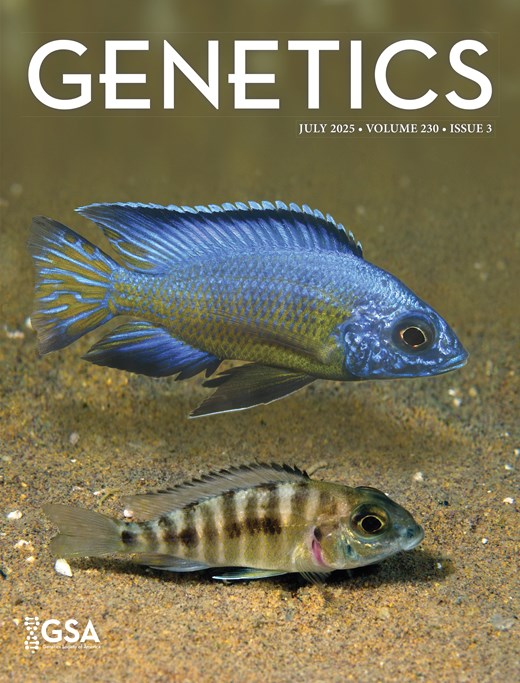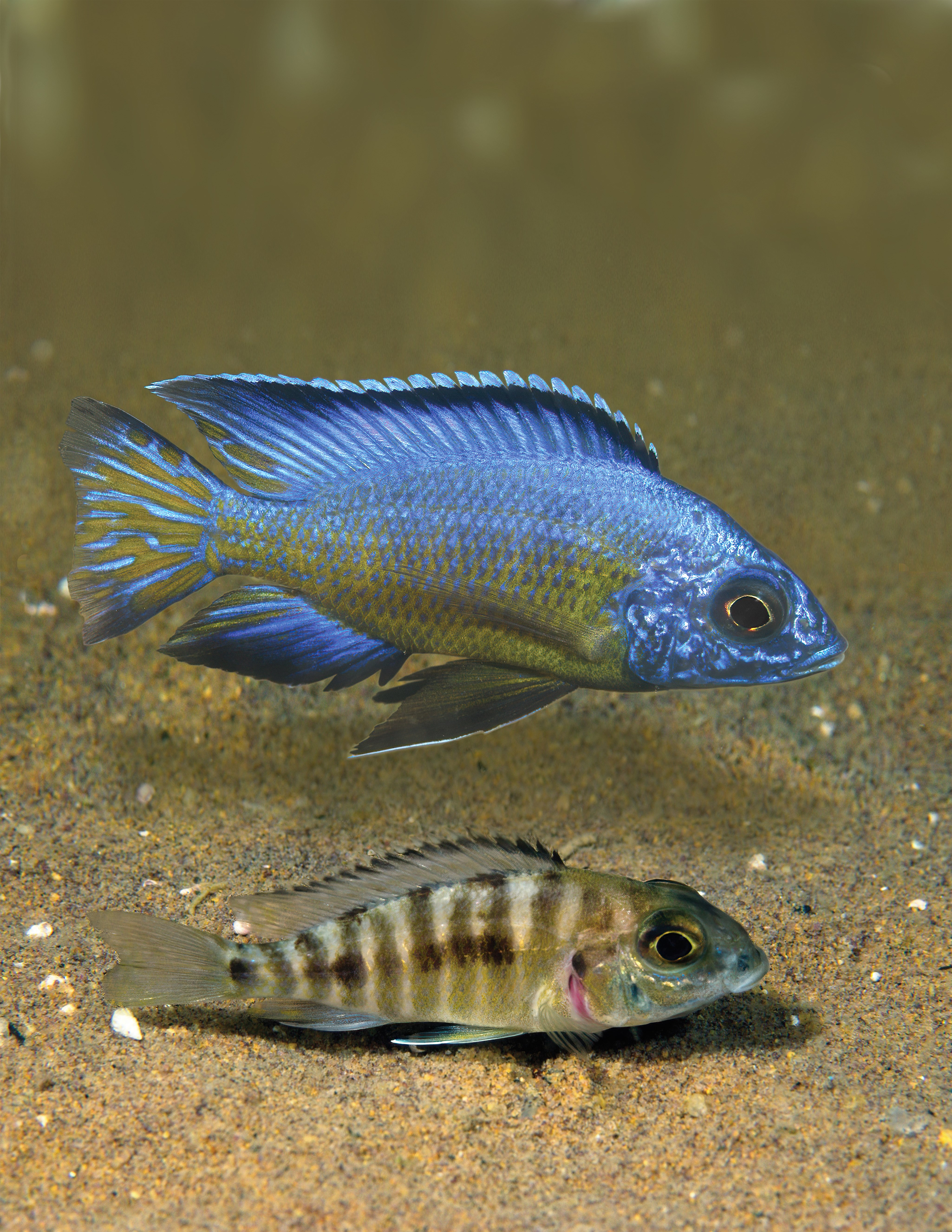
Cover image

Volume 230, Issue 3, July 2025
The 2025 GSA Honors and Awards
Enabling data-driven discoveries in evolutionary genetics and genomics
The shape of discovery: a journey through genetics, coevolution, and a scientific life
Perspectives
There’s never been a better time to be a STEM educator
Brief Investigation
Cellular Genetics
Nuclear deformability depends on H3K9-methylated heterochromatin anchorage to the nuclear periphery in Caenorhabditis elegans
Experimental Technologies and Resources
Potassium-selective channelrhodopsins can exert hyper- or depolarizing effects in excitable cells of Caenorhabditis elegans, depending on experimental conditions
Gene Expression
More than meets the eye: mutation of the white gene in Drosophila has broad phenotypic and transcriptomic effects
Genome Integrity and Transmission
MutSgamma promotes meiotic recombination and homolog pairing in mouse spermatocytes
Investigation
Cellular Genetics
rDNA copy number variation affects yeast fitness in response to different environments
Experimental Technologies and Resources
Targeted seed EMS mutagenesis reveals a basic helix–loop–helix transcription factor underlying male sterility in sorghum
Gene Expression
Molecular evolution of a reproductive barrier in maize and related species
Genetics of Complex Traits
Polygenic strategies for host-specific and general virulence of Botrytis cinerea across diverse eudicot hosts
Improvement of polygenic modeling of blood pressure traits using lifestyle information in the UK Biobank
Genome-wide analysis reveals genes mediating resistance to paraquat neurodegeneration in Drosophila
Paraquat is linked to increased PD risk and to dopaminergic neurodegeneration in animal studies. Gene-environment interactions likely influence whether an individual exposed to paraquat manifests PD. Villalobos-Cantor, Arreola-Bustos, and Martin developed a paraquat-induced neurodegeneration model in Drosophila, applied this model to the Drosophila Genetic Reference Panel and used a genome-wide association approach to identify candidate genes that modify dopamine neuron loss which we validated through RNAi and overexpression functional testing. The authors reveal two paraquat resistance genes, luna and CG32264. Strikingly, the putative mammalian ortholog of CG32264 (Phactr2) was previously linked to human PD, supporting the potential relevance of their findings to human disease.
Gut length evolved under sexual conflict in Lake Malawi cichlids
This study examines the genetic basis of gut length variation in Lake Malawi cichlids, which exhibit different dietary adaptations. It highlights how cichlids recapitulate a broad taxonomic trend: gut length correlates with trophic level, with herbivores and omnivores having longer intestines than carnivores. By creating hybrids of Metriaclima mbenjii (omnivore) and Aulonocara koningsi (carnivore), Baez et al. identify several quantitative trait loci and epistatic interactions underlying gut length differences. These genetic associations are predominantly sex-specific, suggesting historical sexual conflicts. The results indicate complex, polygenic evolution of gut morphology in these fish, and suggest evolutionary interactions and processes shaping dietary traits across species.
Genome Integrity and Transmission
Debunking the dogma that RecBCD nuclease destroys phage
Genome and Systems Biology
Living in poverty is associated with gene expression changes in immune cells
This research aimed to understand how living in poverty affects the immune system and the risk of diseases. Arnold et al. measured gene activity of blood immune cells from 204 participants of the Healthy Aging in Neighborhoods of Diversity across the Life Span study in Baltimore, Maryland. The authors found that gene expression is associated with poverty for 138 genes, with stronger effects in women and with functions related to wound healing. Two of these genes had been previously associated with hypertension. Their findings suggest that poverty influences inflammation and cardiovascular risk through changes in gene activity in immune cells.
Quantitative resolution of cell fate in the early embryogenesis of Caenorhabditis elegans
Population and Evolutionary Genetics
Evolutionary rescue by aneuploidy in tumors exposed to anticancer drugs
Cancer cells can survive drug treatments through evolutionary rescue, where genetic changes enable persistence. Aneuploidy, an abnormal chromosome number, can aid drug resistance. Using models and simulations, Stana et al. examined its role in cancer survival. Aneuploidy delays extinction, increasing the chance of resistance mutations. The authors findings suggest therapies inducing aneuploidy may unintentionally promote resistance. Understanding these dynamics is crucial for designing better treatments to prevent relapse and improve cancer control.
Conflicting Kinesin-14s in a single chromosomal drive haplotype
Statistical Genetics and Genomics
Expanding biobank pharmacogenomics through machine learning calls of structural variation
This research aimed to optimize the Michigan Genomics Initiative (MGI) biobank for pharmacogenomic research. Researchers used existing genotypes and software to develop a genetic dataset of pharmacogene star alleles within the ~80,000-participant, multi-ancestry MGI cohort. They expand this with a novel machine learning method to accurately infer the clinically important CYP2D6*5 deletion and other alleles defined by structural variation. The inferred star alleles aligned well with clinical gold-standard genotyping, demonstrating that pharmacogenomic alleles can be accurately identified at biobank scale with minimal additional resources. The authors encourage other biobanks to create similar callsets to advance pharmacogenomic research globally.


